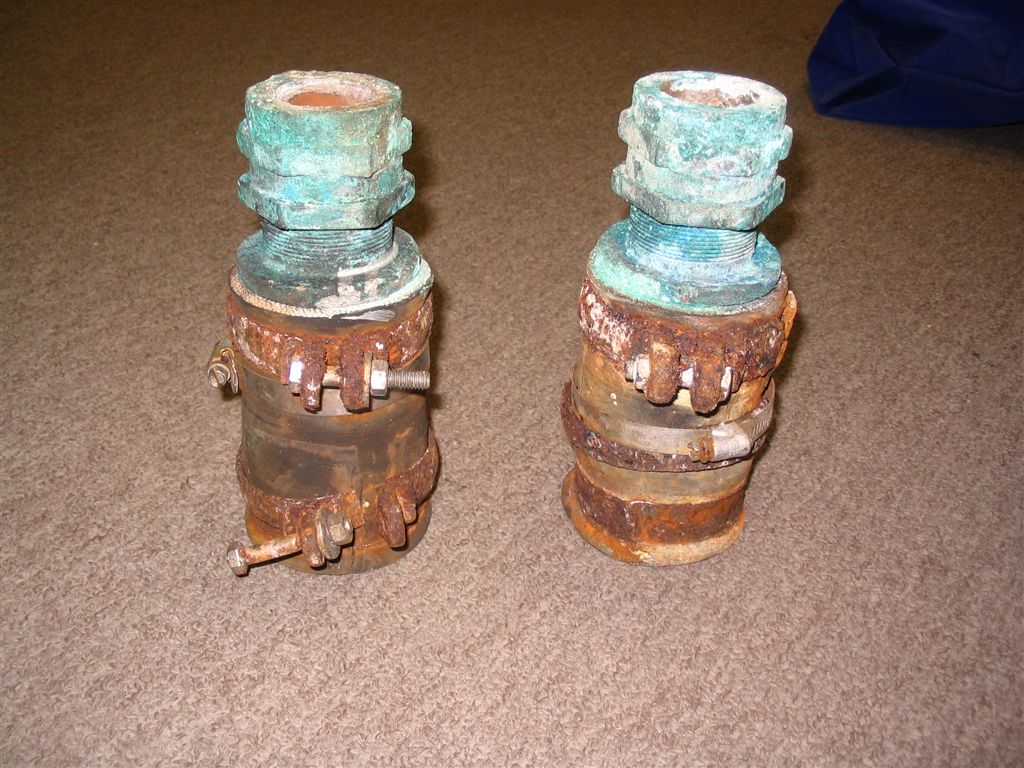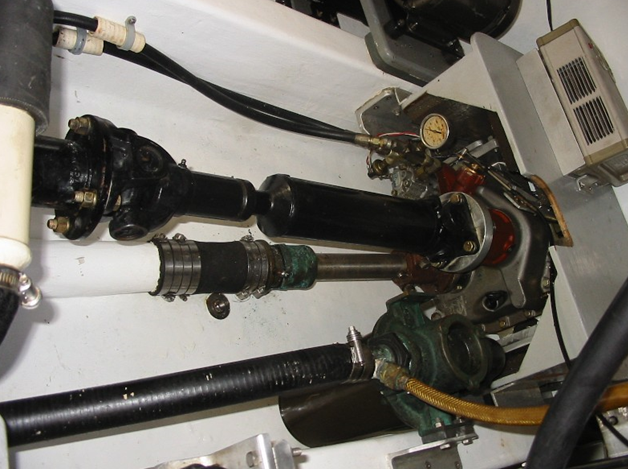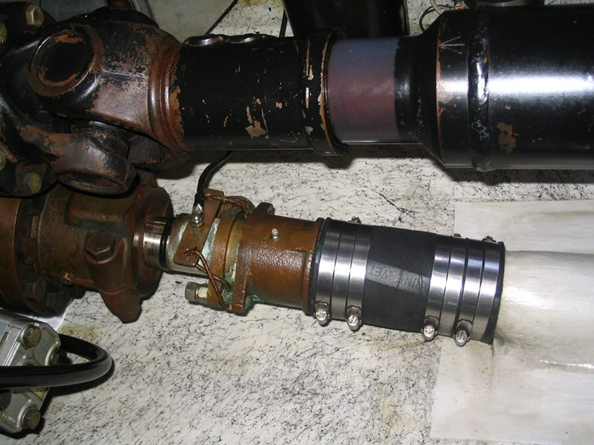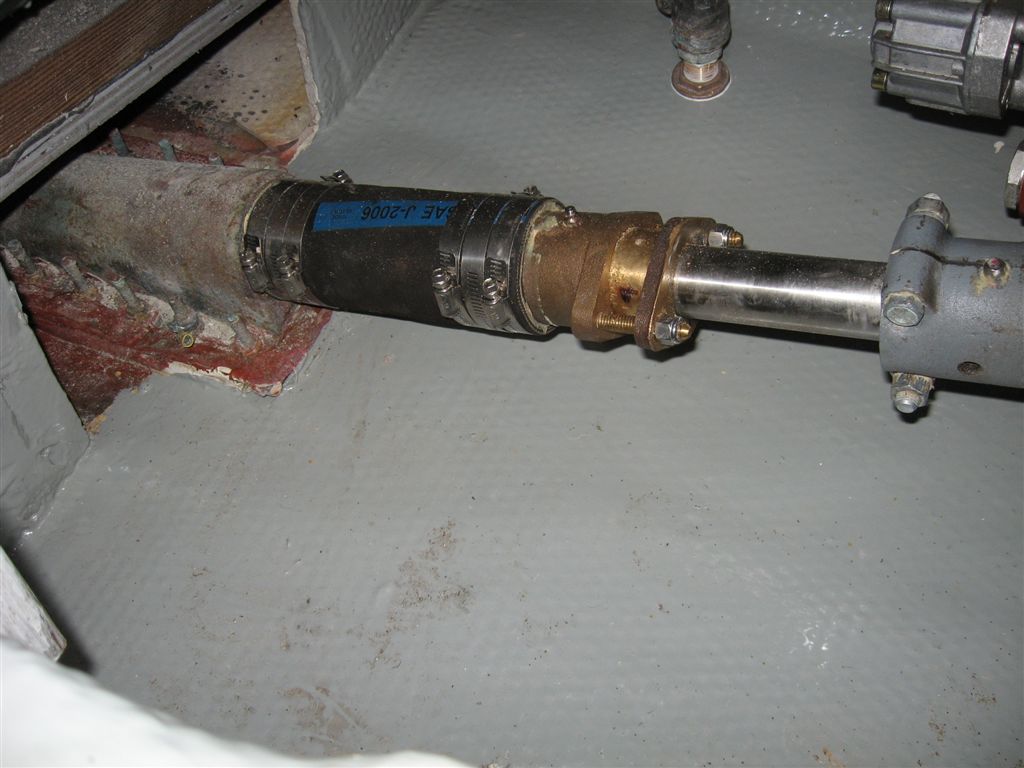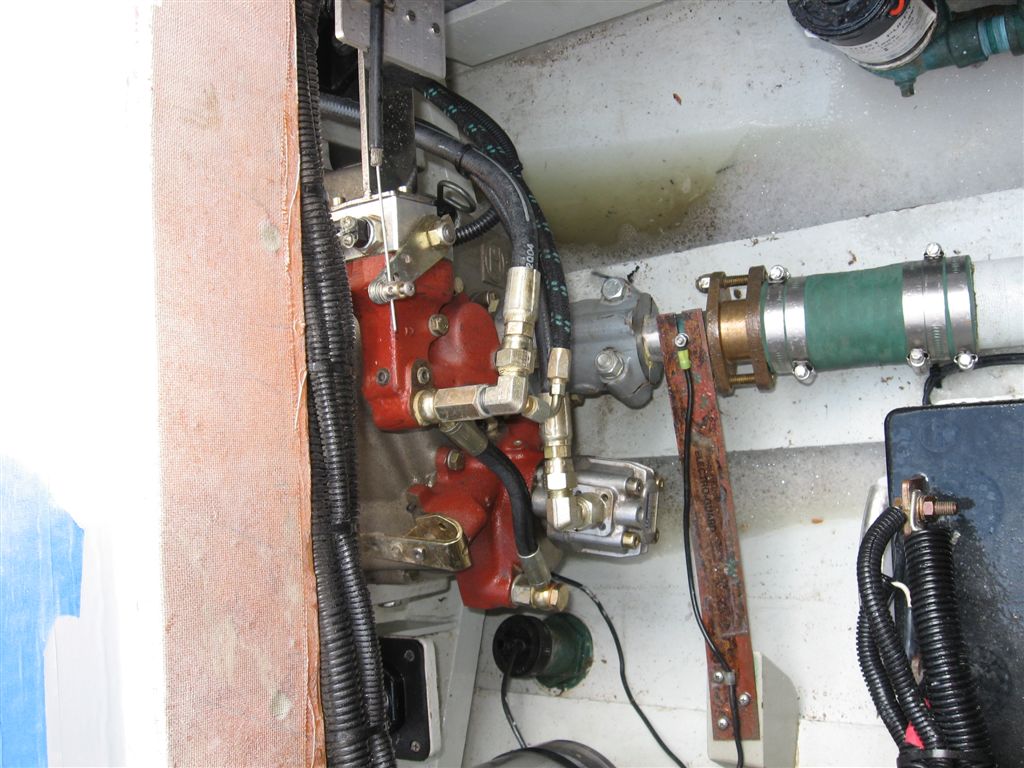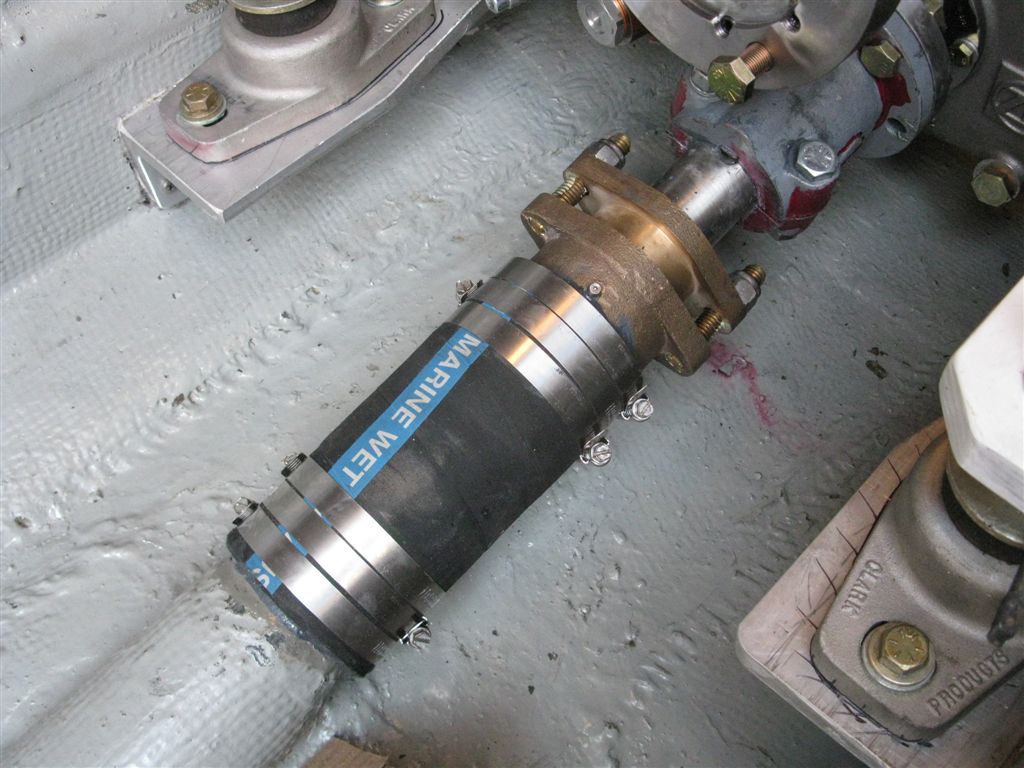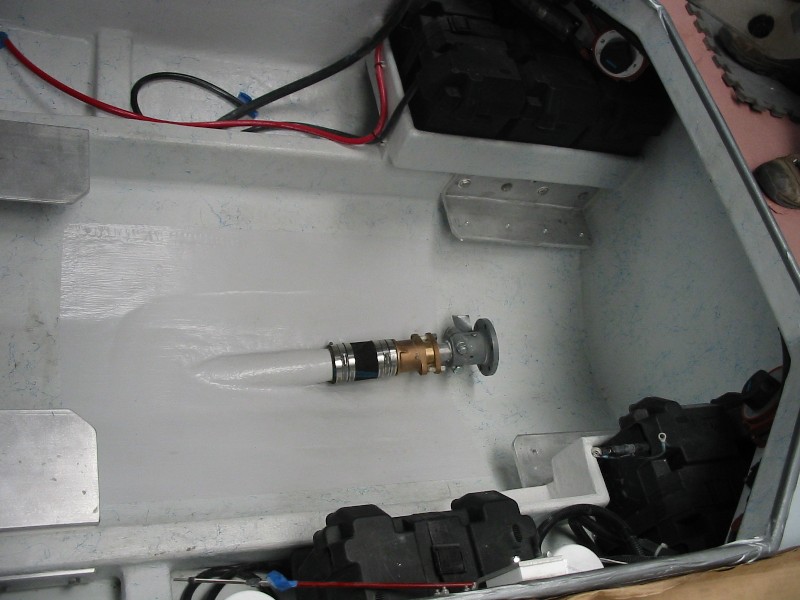Ever really wonder what shaft packings are all about? What do they do, how do they work, how are they are made and whether there may be a better “mouse trap” out there that will do the job of keeping water out of your boat without adding more complexity or worry to your boating experience?
There are lot’s of reasons that can affect why sometimes they are relatively trouble free for years & years, and other times they can me a pain in the behind. But first, we must understand the 2-3 basic types of shaft seals that you run into on a boat and what they are about.
We’ll start with a “packing gland” style and a little history of them. The first two pics below show what is properly described as a “packing gland” and also sometimes referred to as a “stuffing box”.
The picture on the left (old, ugly, and not maintained) and the one in the center shows (well maintained for over 30,000 running hours) the type of packing gland that is “adjusted” by tightening the large adjusting nut and then locking the adjustment by using a JAM nut up against the larger nut. They can work very well, have been around for 50+++ years, but can also be a pain to work with when access is tight or the owner is lazy and does not want to deal with them.
The picture on the right is a different style of the same basic system but uses two threaded studs or “bolts” to tighten down the packing. Way easier to use BUT can be over tightened by the non-familiar user.
In both cases, the packing works the same way. COMPRESSION of the packing material around the shaft over a short distance (Usually about 1 shaft diameter in length).
Things we have learned over the years when using conventional packings are:
- When good and easy access is limited or difficult, NEVER USE the nut-type glands as the adjustment requires two-hands and a multiple of tools and a really good understanding of what’s going on.
- Twin-stud type glands are always easier to deal with as when set-up right, you only need one wrench & one hand to adjust. WE typically never use double nuts to hold the adjustment, but instead use a single S.S. Nylock type nut and that really simplifies the adjustment and never gives any issues.
- Regardless of which style of gland you use (nut or stud type), we always pre-pack them on the lathe and run them in at 1200-1800 shaft RPM thru many hot-cold cycles. This ONE operation eliminates all initial run-in concerns about 90+% and leaves more time to think about other more important things while doing a sea trial.
- Adding a grease fitting and actually using it also makes the packing much more forgiving over the years AND allows for a 100% non-drip at the dock. This means that you can have a dry bilge 1 month later by over-greasing the packing after a trip. This just about always eliminates any corrosion in the packing that seems to always be an issue as time goes by.
- Once a thorough understanding of packing gland inner workings is understood and you want to make the “off the shelf gland” even better, you can typically custom machine the unit to where the concentricity of the machined or thru bored support bearing inside the gland is “lathe accurate” to the hose clamping section. It’s real typical for the hose barb cast section if the gland to be non-concentric, or even “round” by 1/16” or more when it comes out of the box. Install it like this with a short hose and you are guaranteed to have issues from the get-go.
- In general, when you have the room and you are using a “self-aligning” shaft gland /shaft log, a longer hose is always better as it allows the packing gland assembly to follow the shaft as it moves during normal operation.
When the hose must be really short, like less than 1 shaft diameter in-between the gland and the rigid log, we always try and use a high quality piece of silicone multi-ply hose as it’s much softer and does not pre-load the gland. Also, as you can see in our installation pics, we have our own ideas as to clamping the hoses. We hate the old fashioned wisdom of using iron-clamps and short heavy wall stiff hoses that are still supplied by some vendors. This only adds to the issues of pre-loading the glands to the shaft Hoses as “off the shelf glands” are never “lathe accurate as to straightness. This type of thinking is so typical of those who have ZERO field experience with engines mounted on highly flexible mounts and or vessels that have flexible hulls and stringers unlike the old designs of “East Coasters” when the shaft penetrated the bulkhead on a combo rigid log with shaft support bearing, and a rigidly mounted engine on a very stiff-keeled vessel. - I basically have not used Flax type packing for over 20 years now. We prefer Pure Teflon braided packing that is used in the chemical pump industry. I am a tad familiar with GORTEX and it also seems to be a cut above and may be even a better choice in some “difficult” applications.
- The vast majority of applications we deal with are 700-2000 hrs +++ a year vessels. We do work with a sprinkling of low hour applications and will even use a dripless packing (PSS) once in a while. Although I DO NOT like them for any high hour applications or for any off-shore vessels that venture long distances from the nearest boatyard, I have had good results with the two dozen or so we have installed over the years. But with any of these style units, IF YOU do have an issue, you could easily be in danger of flooding your engine room or even sinking your vessel before you figure out how to deal with it.. The “horror stories” are out there. Dripless shaft seals of any design can be really nice in some applications and are generally care free, or they can be extremely scary if something goes wrong
If you want to know how we really prefer to do it, then click on this link: ** LINK **
IMO, nothing come close if safety & long term is part of your plan.

